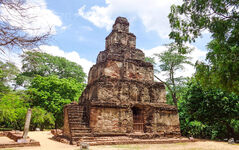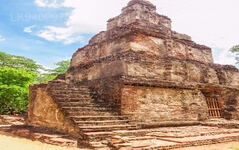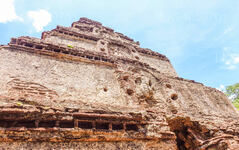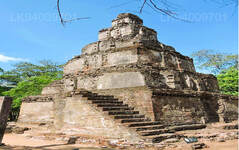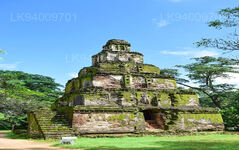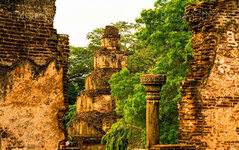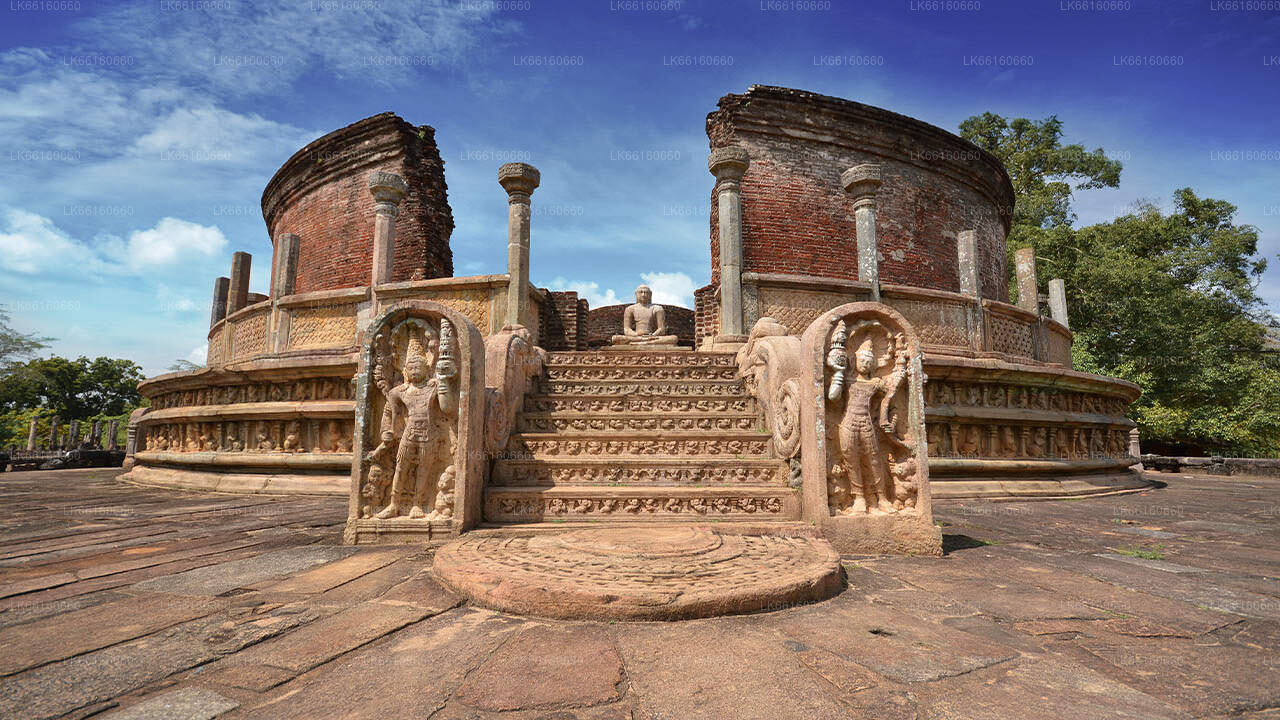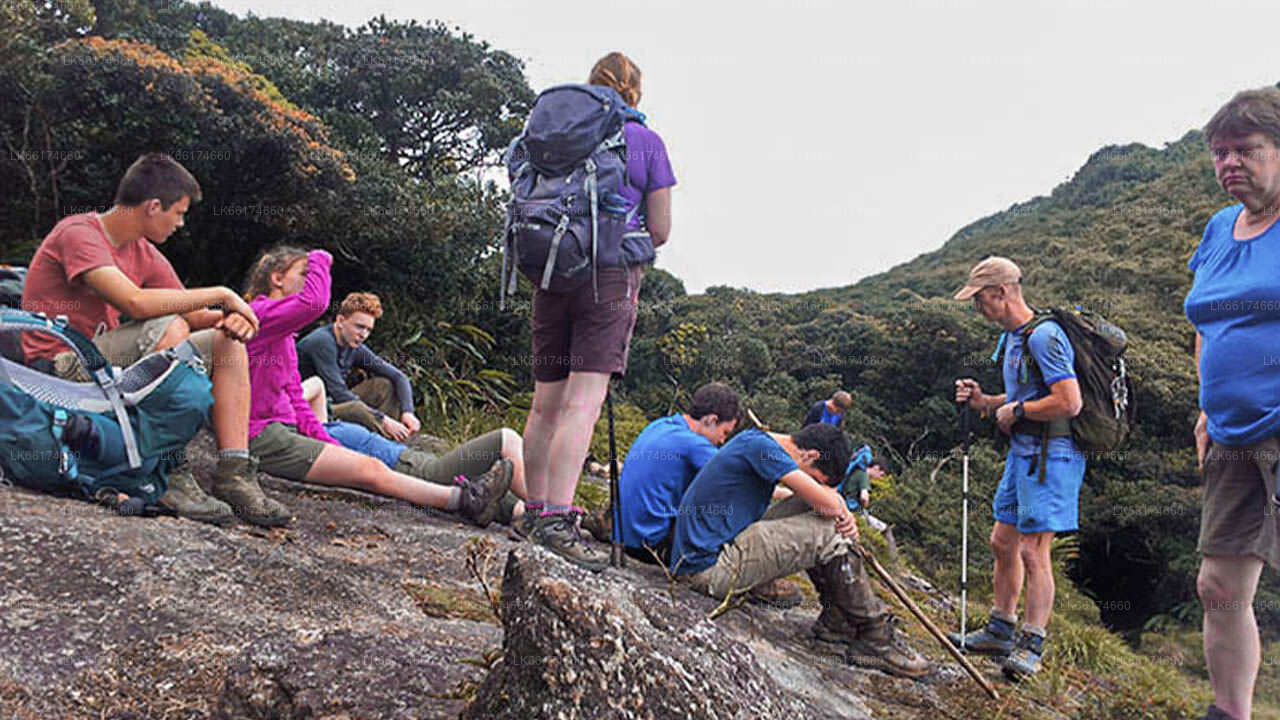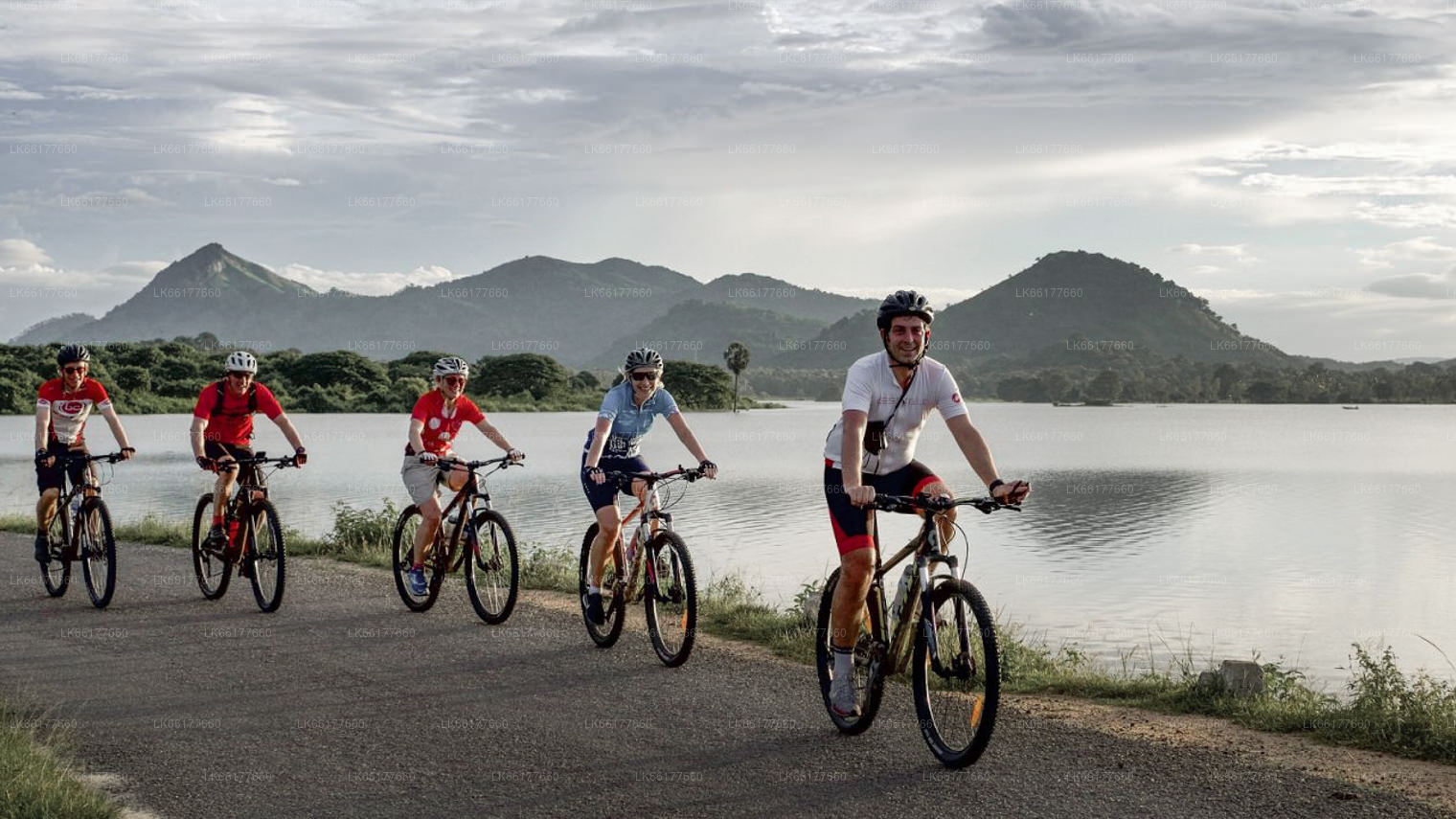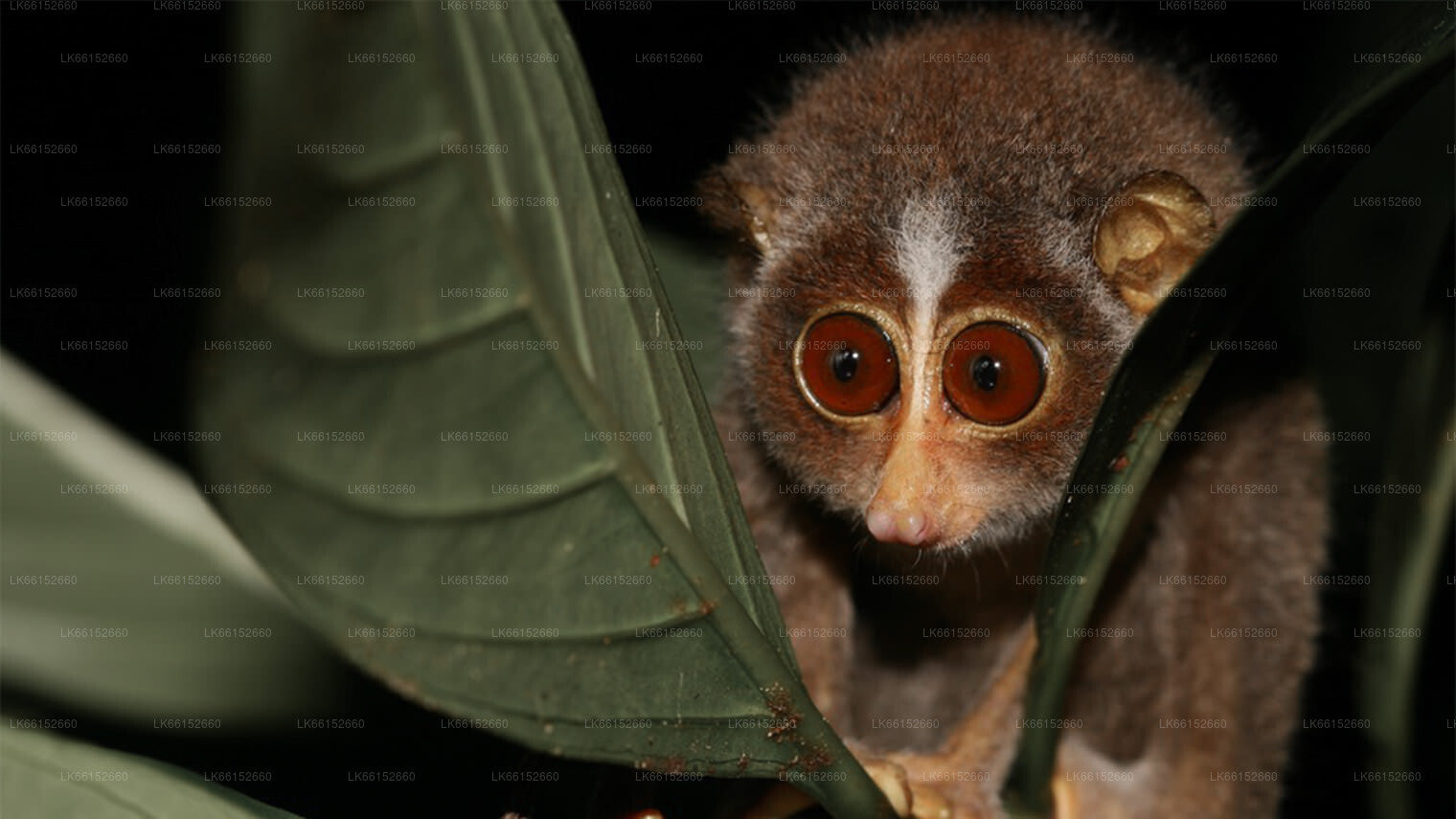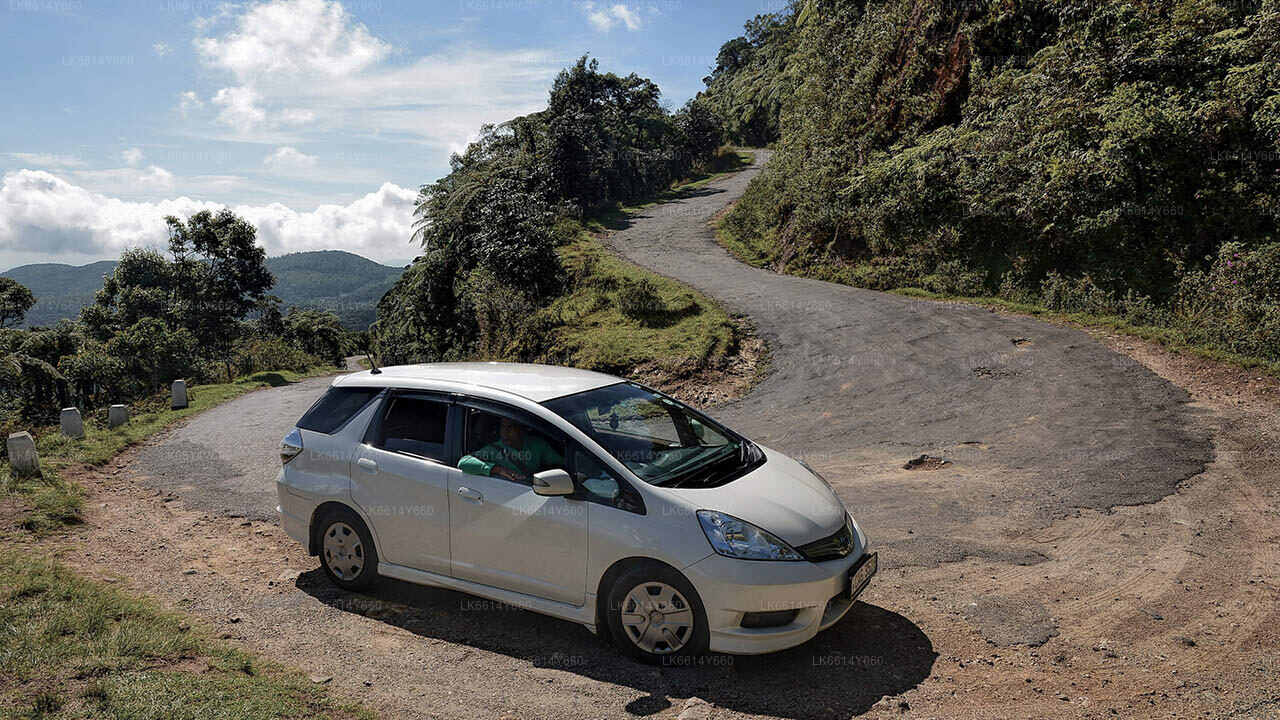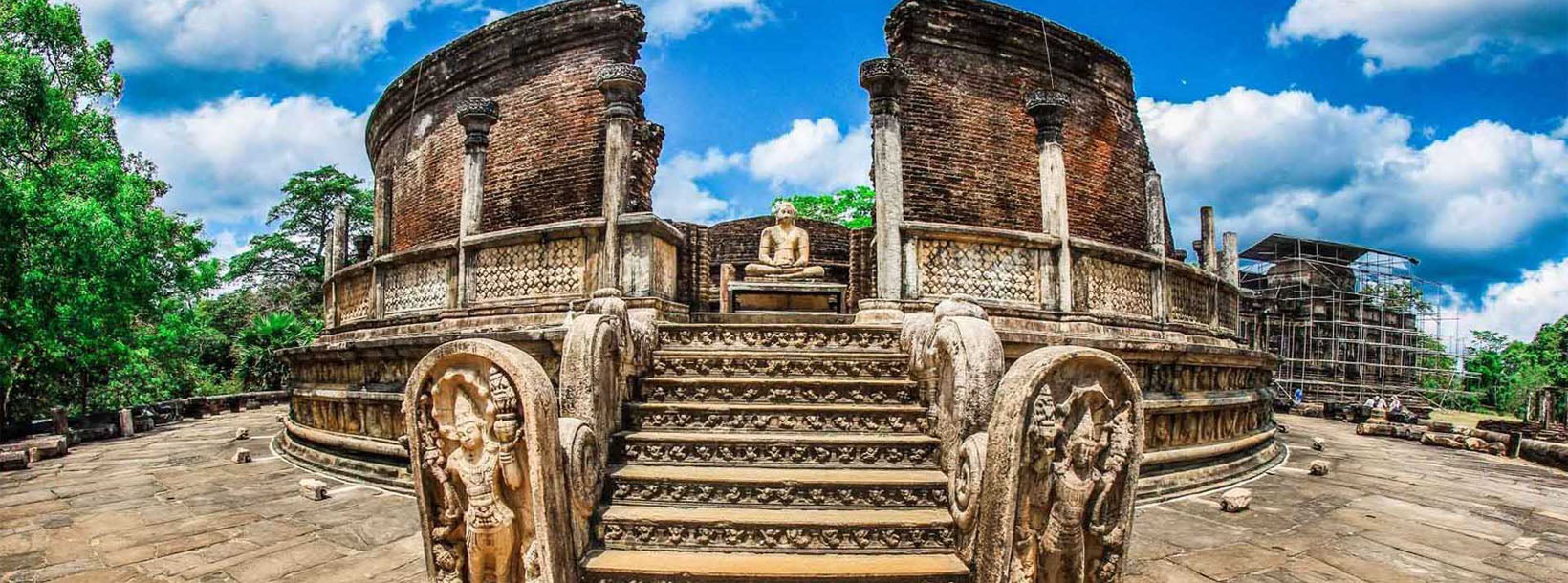
폴로나루와 시
스리랑카의 유네스코 세계문화유산인 폴로나루와는 스리랑카의 중세 수도(11세기~13세기)였습니다. 상징적인 갈 비하라(Gal Vihara) 석상을 비롯한 잘 보존된 유적지로 유명한 폴로나루와는 고대 싱할라 문명의 위엄을 보여주는 인상적인 건축물들을 자랑합니다.
Sathmahal Prasada
Sathmahal Prasada in Sri Lanka: The Stepped Pyramid of Polonnaruwa
Sathmahal Prasada in Sri Lanka is a seven storied stepped pyramid located in an elevated area amongst the ancient city Polonnaruwa. The structure has entrances on all four sides and an additional staircase to reach the upper levels. It is believed to be built during the Polonnaruwa era, somewhere between the 11th and 13th century AD. However, no record exists of this pyramid, its builder or purpose.
The Seven Storied Palace is believed to be a stupa by some, due to its proximity to notable Buddhist ruins such as stupas, monasteries and etc. However the architecture is completely different and does not resemble any other ancient architecture in Sri Lanka. It is the only stepped pyramid in Sri Lanka and one of only four other ancient buildings with square bases, the others all being damaged stupas or monastic ruins in Anuradhapura. It is interesting to note that none of the other three buildings show signs of having been pyramids and all seem to have been squat in structure.
Sathmahal Prasada in Sri Lanka: Resemblance to Architectures beyond the Seas
Though it does not have comparative architecture in Sri Lanka itself, Sathmahal Prasada has similarities to the architecture of some cultures beyond the oceans.
• Stepped Pyramids are structures that use flat platforms or ‘steps’ in a receding order from ground up, to form a shape similar to a geometric pyramid. They are usually large and are built using several layers of stone.
• There are stepped pyramids found throughout history in many cultures and locations around the world.
• Interestingly enough, there were no firmly established connections between the different cultures.
• Sathmahal Prasada is most similar in structure (except for the staircase) to the Koh Ker temple and Baksei Chamkrong temple in Siem Reap, Cambodia (both are Shiva temples built around the 10th century AD), and on a smaller scale similar to the Mayan Temple of the Masks in Tikal, Gautemala and some other Mayan temples.
폴로나루와 지구 소개
폴로나루와는 스리랑카 북중부 주에서 두 번째로 큰 도시입니다. 고대 도시 폴로나루와는 유네스코 세계문화유산으로 지정되었습니다. 폴로나루와는 정복과 투쟁의 역사를 간직하고 있으며, 문화 삼각지대의 세 번째 요소로 손꼽힙니다. 캔디에서 북동쪽으로 약 140km 떨어진 폴로나루와는 역사와 문화 애호가들에게 수많은 중요한 명소를 품고 있어 끝없는 즐거움을 선사합니다.
오늘날 남아 있는 유적의 상당 부분은 파라크라마 바후 1세의 공로로 여겨집니다. 그는 공원, 건축물, 관개 시설 등 도시 계획에 왕실 자원을 대거 투자했습니다. 그의 통치 기간은 선견지명이 뛰어난 통치자 아래 왕국이 번영하고 번영했던 황금기로 여겨집니다. 파라크라마 사무드라는 거대한 탱크로, 후원자의 이름을 따서 명명되었습니다. 왕의 인기 있는 왕궁, 아름답게 조각된 석조 코끼리로 둘러싸인 알현실, 그리고 목욕탕은 당시의 뛰어난 공학 기술을 보여줍니다.
북중부 지방 소개
스리랑카에서 가장 큰 주(州)인 북중부주는 전체 국토 면적의 16%를 차지합니다. 북중부주는 폴로나루와와 아누라다푸레라는 두 개의 지구로 구성되어 있습니다. 아누라다푸라는 스리랑카에서 가장 큰 지구로, 면적은 7,128km²입니다.
북중부 지방은 투자자들이 사업을 시작할 수 있는 풍부한 잠재력을 가지고 있으며, 특히 농업, 농업 기반 산업, 축산 분야가 그렇습니다. 북중부 지방 주민의 65% 이상이 기초 농업 및 농업 기반 산업에 의존하고 있습니다. 3,000개가 넘는 중대형 탱크가 있어 북중부 지방은 "웨우 벤디 라제(Wew Bendi Rajje)"라고도 불립니다. 스리 마하 보디야(Sri Maha Bodiya), 루완웰리 세야(Ruwanweli Seya), 투파라마 다게바(Thuparama dageba), 아바야기리 사원(Abayagiri Monastry), 폴로나루와 란콧 웨헤라(Polonnaruwa Rankot wehera), 랑카틸라케(Lankathilake) 등이 있습니다.

